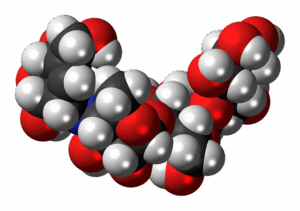GLP-1 agonists (drugs) mimic natural hormones to regulate hunger and metabolism, offering a dual benefit in obesity treatment: improved blood sugar control and reduced appetite. Approved medications like semaglutide and liraglutide aid weight loss and show long-term benefits for metabolic health. While generally safe, these drugs can cause side effects and may carry increased risks of pancreatitis and thyroid cancer with long-term use. Ongoing research explores their potential in treating comorbidities and personalized medicine approaches aim to optimize efficacy. GLP-1 drugs hold promise as a revolutionary obesity treatment.
“Uncovering the Potential of GLP-1 Drugs in Obesity Treatment explores the transformative role of these innovative therapies. GLP-1 agonists, naturally occurring hormones, have shown remarkable promise in managing obesity by regulating hunger and blood sugar levels. This article delves into their mechanism of action, from curbing appetite to promoting weight loss. We’ll examine approved medications, their benefits, and potential side effects, while also peering into the future of GLP-1 drug research for a comprehensive understanding of this game-changing approach in obesity treatment.”
Understanding GLP-1 Agonists: A Key Player in Obesity Management

GLP-1 agonists are a class of drugs that mimic the effects of glucagon-like peptide-1 (GLP-1), a hormone naturally produced in the intestine. These drugs have emerged as a powerful tool in the management of obesity, offering a unique approach to weight loss compared to traditional diet and exercise methods. By stimulating GLP-1 receptors, they enhance insulin secretion in response to meals, helping to lower blood sugar levels, and also suppress appetite, leading to reduced food intake.
This dual action makes GLP-1 agonists an innovative solution for individuals struggling with obesity. They are particularly effective in improving glycemic control in people with type 2 diabetes while also promoting weight loss as a beneficial side effect. Several GLP-1 drugs have been approved by healthcare regulatory bodies, providing a new avenue for clinical practitioners to address the growing global obesity epidemic.
The Role of GLP-1 in Regulating Hunger and Blood Sugar

GLP-1 (glucagon-like peptide-1) plays a dual role in the complex dance of regulating hunger and metabolism, making it a key target for obesity treatment. This hormone is secreted by intestinal L cells in response to food intake, particularly carbohydrates. Its primary function is to stimulate insulin secretion from the pancreas in a glucose-dependent manner, helping to lower blood sugar levels after meals.
Beyond its effect on blood sugar, GLP-1 drugs have been shown to reduce appetite and promote feelings of fullness, leading to decreased food intake. This dual action makes GLP-1 agonists, or medications that mimic this hormone’s effects, promising tools in the fight against obesity. By regulating both insulin release and hunger, these drugs offer a novel approach to weight management, potentially providing significant benefits for individuals struggling with overweight or obesity.
How GLP-1 Drugs Work: Mechanisms and Effects on Body Weight

GLP-1 agonists, or drugs that mimic the effects of glucagon-like peptide-1 (GLP-1), have emerged as a powerful tool in obesity treatment. These medications work by stimulating insulin secretion in response to food intake, particularly carbohydrates. This action helps lower blood sugar levels, which is crucial for people with type 2 diabetes or prediabetes, two conditions often associated with obesity.
On top of their insulinotropic effects, GLP-1 drugs also increase feelings of fullness and reduce appetite. They achieve this by interacting with specific receptors in the brain that regulate hunger and satiety. This dual action leads to a decrease in overall calorie intake, contributing significantly to weight loss. Additionally, these drugs can slow gastric emptying, which makes individuals feel full for an extended period after eating.
Current Applications and Approved GLP-1 Medications for Obesity

In the realm of obesity treatment, GLP-1 agonists have emerged as powerful tools, offering a novel approach to managing weight. These GLP-1 drugs mimic the actions of natural hormones, enhancing satiety and reducing appetite, which leads to decreased food intake and subsequent weight loss. Current applications include their use in conjunction with lifestyle interventions for individuals struggling with obesity. Several GLP-1 medications have gained approval from regulatory bodies worldwide, such as semaglutide and liraglutide, specifically indicated for chronic weight management. These drugs not only aid in weight reduction but also improve metabolic health markers, including blood sugar control and cardiovascular risk factors.
The approved GLP-1 medications are administered via injection or, in some cases, oral formulations. They have shown consistent effectiveness in clinical trials, leading to significant weight loss compared to placebo or standard care. Moreover, their ability to normalize blood glucose levels makes them a promising option for individuals with type 2 diabetes and obesity, providing a dual benefit for overall health improvement.
Benefits, Risks, and Side Effects of Long-Term GLP-1 Therapy

GLP-1 agonists, as a class of drugs, offer several benefits for obesity treatment in the long term. They have been shown to promote significant weight loss, often in conjunction with improved metabolic health markers such as reduced blood sugar and cholesterol levels. These drugs work by mimicking the effects of natural hormones, enhancing feelings of fullness and slowing gastric emptying, which can lead to decreased calorie intake.
However, like any treatment, GLP-1 therapy also comes with potential risks and side effects. Common adverse reactions include nausea, vomiting, diarrhea, and abdominal pain, often more pronounced at the beginning of treatment. Long-term use may also increase the risk of pancreatitis and thyroid cancer, although the evidence for this is still inconclusive. It’s crucial for patients to be aware of these possibilities and discuss them openly with their healthcare providers to make informed decisions regarding long-term GLP-1 drug therapy.
Future Perspectives and Research in GLP-1 Agonists for Obesity Treatment

The future of GLP-1 agonists in obesity treatment looks promising, with ongoing research exploring their potential beyond weight management. Current studies are investigating the role of these drugs in improving metabolic health and reducing the risk of cardiovascular diseases, which often accompany obesity. By targeting specific mechanisms involved in glucose regulation and appetite control, GLP-1 drugs could offer a comprehensive approach to managing obesity-related comorbidities.
Additionally, researchers are delving into personalized medicine approaches, aiming to optimize treatment efficacy and minimize side effects. This includes studying individual variations in GLP-1 receptor function and exploring combination therapies with other weight management medications. As our understanding of GLP-1 agonists continues to evolve, the potential for these drugs to revolutionize obesity treatment strategies becomes increasingly apparent, paving the way for a healthier future for those struggling with this complex condition.
